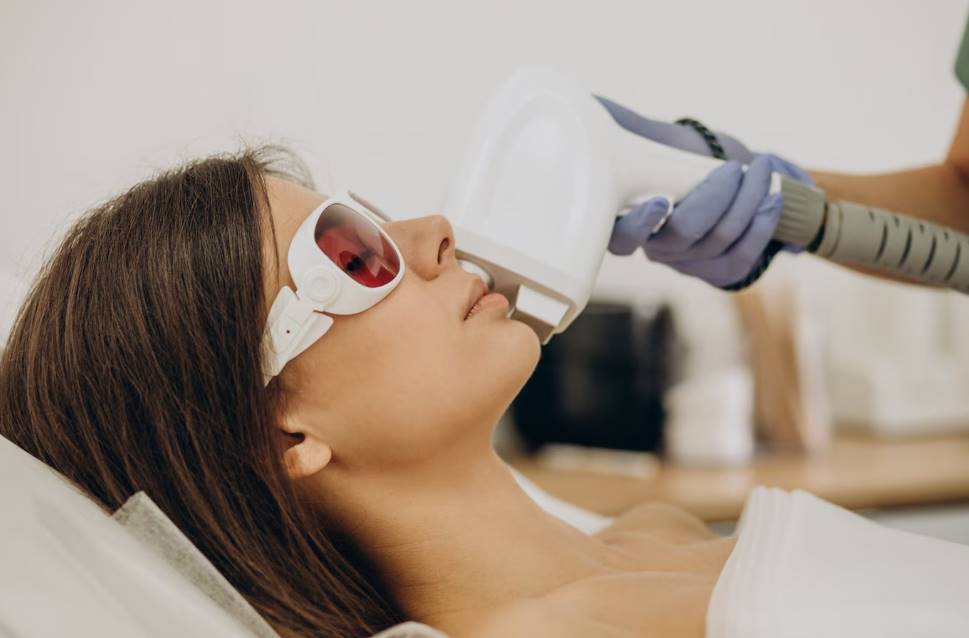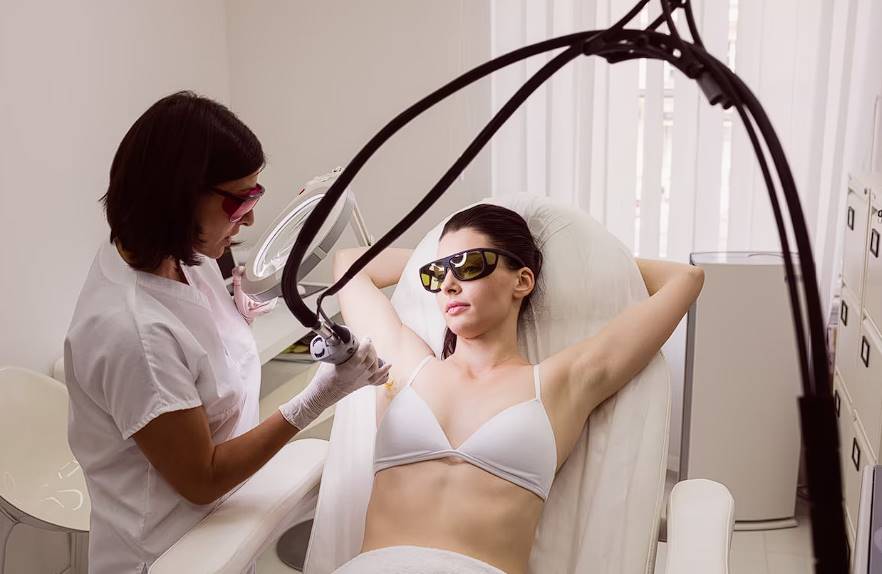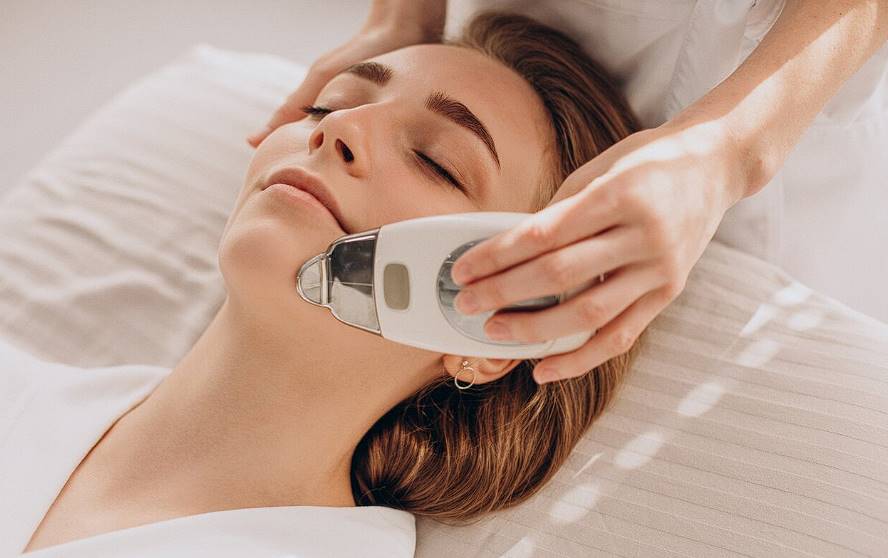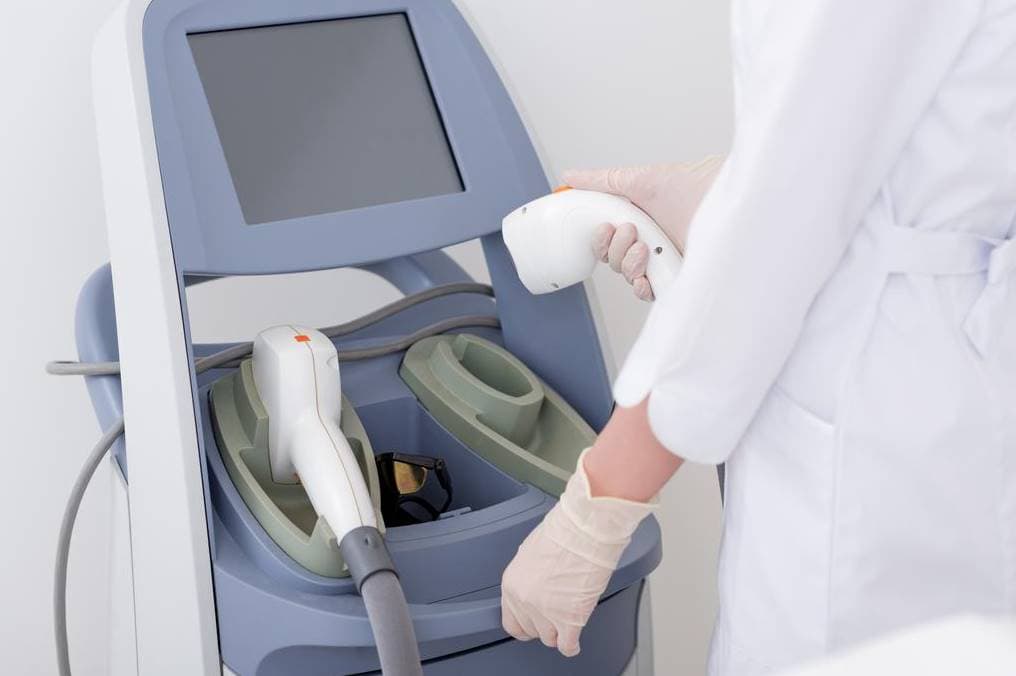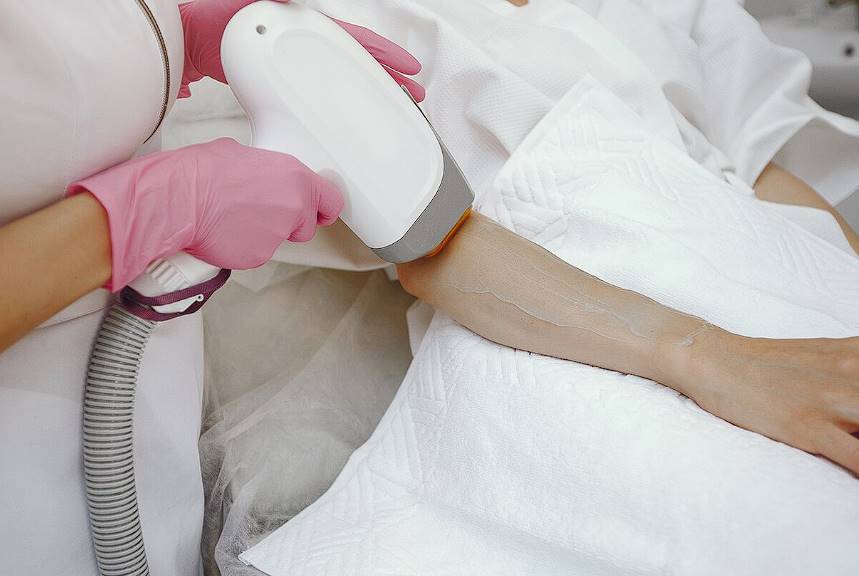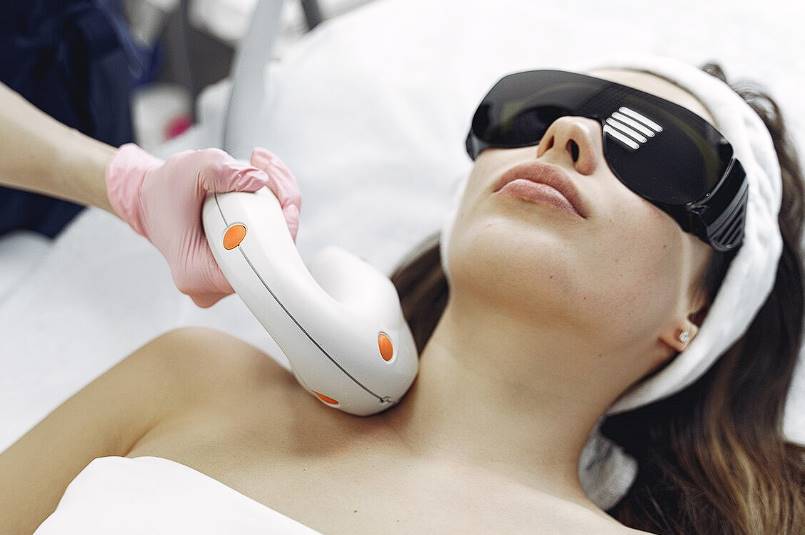Laser hair removal is an option to explore to eliminate unsightly body hair. When conducted by a competent professional who uses the appropriate type of laser for your skin type, laser hair removal assures a large decrease in unwanted hair. This alternative to traditional hair removal procedures such as shaving and waxing is safe and effective, and it offers the promise of a reduction in unwanted hair. After your treatment, you may need only touch-ups or permanently reduced hair growth.
But laser hair removal isn't without its hazards and adverse effects. Skin reactions might be mild, such as redness and swelling, or severe, such as permanent changes in skin tone, scarring, blistering, or even herpes simplex. Before scheduling your first visit, it's wise to weigh the benefits and drawbacks. Keep reading to learn all about the process of laser hair removal.
Laser Hair Removal: What Is It?
Laser hair removal stands out as a non-invasive technique for eradicating unwanted hair. It operates by directing specific wavelengths of light energy towards the pigmented hair follicles, thereby resulting in their termination. Consequently, the treated region witnesses a notable reduction in hair growth.
Why Choose Laser Hair Removal?

Many opt for laser hair removal in pursuit of a durable solution to reduce unsightly hair growth. With the ability to target both facial and body hair, dermatologists utilise this laser technique, alleviating the need for daily rituals like shaving, threading, tweezing or waxing. Typically, around six sessions yield a significant reduction in hair growth. The results are enduring, relieving users from the regular chore of hair removal.
Advantages Of Laser Hair Removal
- Long-Lasting Results: While the effects might not last forever, they do persist for an extended period. On reappearance, the hair density is visibly diminished in the treated area.
- Low Maintenance: Compared to the frequent shaving necessitated by razors or the monthly appointments for waxing and threading, laser hair removal generally requires four to six sessions with sporadic maintenance thereafter.
- Broad Application: This method proves effective against common issues like ingrown hairs, typically caused by shaving and waxing. By using light for hair removal, the risks of cuts, nicks, and the irritation of razor burns are sidestepped.
- Minimal Downtime: Post-treatment, while there might be minor redness or swelling, regular activities can be resumed swiftly. Since the procedure is non-invasive, no recovery period is required. However, it's crucial to avoid immediate tanning, whether natural or artificial.
- Economical in the Long Haul: An initial higher outlay, when compared to razors or waxing solutions, is outweighed by the prolonged effects of laser hair removal. Over time, the expenditure on regular hair removal diminishes significantly.
- Potential to Prevent Skin Issues: Another feather in its cap is the potential reduction in skin conditions like folliculitis, an inflammation of the hair follicles. Recent studies from 2019 also underscored its efficacy in treating conditions like Folliculitis barbae, a condition marked by swelling and inflammation around hair follicles in commonly shaved areas, such as the beard line in men.
Laser hair removal offers a blend of convenience and long-term benefits, making it an attractive choice for many in their quest for smoother skin.
Is Laser Hair Removal Permanent?
Permanent hair loss occurs when a hair follicle is damaged or removed. Some hair will inevitably return after hair removal treatments have been completed. Repeating the treatment process later can control the amount of regrown hairs. Complete hairlessness is a possibility.
Whether or not hair grows back after being removed relies on various circumstances, such as the type of hair that grows back and the expertise of the person doing the removal.
Regrown hair is usually finer and less obvious than the original growth. The laser may injure the hair follicle even if it fails to destroy it. When a hair follicle is injured but not destroyed, new hair will grow in its place. Most people will have some hair regrowth because it is difficult to eliminate all hair follicles.
People who want to remove all their hair permanently may need multiple treatments, as hair can be treated again if it grows back. Sometimes, hair might be difficult to treat because it is too thin, short, or weak. Plucking out individual hairs is one alternative to waxing that some may find useful.
How Long Does It Last?
The hair is gone for good when the laser destroys the hair follicle. If the hair follicle is slightly compromised, new hair will grow. The time it takes for hair to grow back depends on the person's unique hair development cycle. The rate at which one's hair grows varies from person to person. Resting-phase hair takes longer to regrow than other phases of hair. Within a few months, hair should grow back for most people. When this occurs, further removal procedures become an option.
Myths Surrounding Laser Hair Removal
Several things need to be clarified about the effectiveness of laser hair removal.
Laser Hair Removal Can Cause Cancer.
Laser hair removal procedure does not cause cancer, contrary to popular belief. The lasers are constructed in such a way that they can avoid damaging surrounding tissue while selectively focusing on the hair follicles. There is some radiation exposure when using lasers for hair removal. However, no proof exists that laser hair removal therapy causes skin cancer. Thus, this radiation is not considered dangerous.
Fertility Problems After Laser Hair Removal.
There is, once again, zero proof that laser depilation causes sterility. The lasers' penetration depth is limited to the skin, so they cannot harm internal organs. Laser hair removal is often safe, even in delicate places like the groyne.
Home Kits Are As Beneficial As Visiting A Dermatologist.
If you want to get rid of unsightly hair but don't want to spend the money on a trip to the dermatologist, you can get a laser removal kit to use at home. Many people may notice slight improvements using these kits, such as lighter or finer hair. However, home kits differ from the sophisticated medical equipment trained professionals utilise.
Does Laser Hair Removal Have Any Negative Consequences?
Laser hair removal has many advantages, but it has its risks and adverse effects. Do your homework before deciding where to get the therapy done to reduce the risk of experiencing any unwanted effects. Consultation with a skincare professional who is knowledgeable in determining which lasers are appropriate for use on particular skin types is essential prior to attempting laser hair removal.
Laser hair removal is generally painless. However, the skin may be sore or irritated immediately following treatment. Irritation, crusting, skin colour changes, and other skin reactions are possible after laser hair removal. People who desire a more long-lasting solution to hair removal than shaving or waxing often turn to laser hair removal. The hair follicles must be inactivated by the laser for hair removal to be successful.
However, patients should be aware of some risks associated with laser hair removal before beginning treatment. Permanently eliminating unwanted hair with a laser is a safe and effective option.
Itching And Redness
Hair follicles are what laser hair removal affects. Many people's skin becomes red and irritated due to this physiological reaction. The skin may enlarge somewhat, feel tingly, or experience other sensations. In most cases, the symptoms will subside quickly. Skin in the affected area may resemble that recently waxed or plucked. To lessen the skin's reaction, some dermatologists apply a topical anaesthetic.
After the initial reaction, usually within a few hours of therapy, irritation should lessen. Cold compresses or a shower help reduce swelling and redness.
Crusting
The affected area may develop a crust in some persons. This is a common annoyance, albeit a small one. Scabbing and scarring may follow a bout of crusting. A moisturiser or other aftercare measures on the treated region following laser removal can help reduce the risk of long-term side effects.
Skin Colour Changes
Minor skin colour changes are possible after treatment. After removing hair with a laser, the colour may shift subtly in either direction. Darker pigmentation alterations may be more noticeable in people with lighter skin. Those with darker skin tones may see lighter pigmentation shifts more frequently. Over time, these alterations often disappear, and the skin goes back to normal.
Eye Injury
The process of hair removal uses strong lasers. This implies the practitioner runs the danger of major eye injury, particularly when working on the face. Protective eyewear is recommended for both the patient and the doctor during the process to avoid any potential harm.
Skin Infection Risk
Infection is dangerous with laser hair removal, as with other cosmetic hair removal treatments.
Treat the affected area as you would a wound until it has healed. Infections of any kind should be reported to a dermatologist immediately. Finally, if an infection develops, they shouldn't treat huge areas of skin with OTC antibiotic creams.
Why Follow-Up Sessions Are Necessary

Laser hair removal is most effective when used with a maintenance programme. The average number of laser maintenance sessions is three. The average number of laser therapy sessions the expert recommends is four to six. These must also be separated by a minimum of six weeks between applications, increasing the total treatment time to nine months.
Each session has the potential to reduce the number of hairs on your body. The remaining or new hair that grows back will be finer and lighter in colour. According to professionals, you should expect a 10–25% reduction in hair count following your first treatment. The subsequent rate of decline will be faster but will also be more variable.
Additionally, you may require periodic maintenance sessions to keep everything running well. These aid in preventing hair regrowth by blocking the hair follicles. After the first full course of laser therapy, some patients need maintenance sessions once or twice yearly to keep their results. Each subsequent session will take as long as the first one did when you had laser hair removal. Timeframes can vary widely depending on the specifics of a patient's care. Your maintenance session length could be reduced if you only need to address a few minor issues.
Conclusion
Laser hair removal is a non-invasive method that can be used to get rid of unwanted hair on the face and body. It works by sending specific colours of light energy to hair follicles with pigment, which kills the hair follicles. Most people need about six sessions of the treatment, which significantly slows hair growth.
Laser hair removal has a lot of benefits, such as long-lasting results, low upkeep, a wide range of uses, little downtime, economic benefits, and the possibility of preventing skin problems like folliculitis. It is also cost-effective over time since the long-term benefits outweigh the higher cost at the start.
When a hair follicle is destroyed or taken out, hair loss is permanent. Some hair may grow back after treatment. By repeating the process later, you can decide how many hairs grow back. The hair that grows back is generally thinner and less noticeable than the hair that was there before. The laser may hurt the hair follicle even if it doesn't kill it.
How long it takes for hair to grow back varies on how fast hair grows in that person. Resting-phase hair takes longer to grow back than other phases, but most people should have hair again in a few months.
But there are some myths about laser hair removal, like the idea that it could cause lifelong hair loss and that you have to get more than one treatment. Before making your first appointment, you should think about the pros and cons.
Laser hair removal is a safe and effective way to get rid of unwanted hair, but it does come with some risks and side effects. The lasers are made so that they don't hurt the flesh around them. Instead, they focus on hair follicles, which keep radiation from getting into the body. There is no evidence that laser depilation makes people sterile, and the laser only goes as deep as the skin, so it is safe to use even in sensitive places.
People who don't want to go to a doctor may find that home kits are helpful. But laser hair removal can make your skin hurt, itch, crust, change colour, and have other responses. Before you try the treatment, you should talk to a professional in skin care to lower the risk of getting side effects.
The treatment may cause itching and redness right away, but these symptoms generally go away quickly. Some doctors may put a local anaesthetic on the skin to make it less sensitive. Some patients may get a crust, which can be handled with moisturiser or other aftercare steps.
After treatment, your skin colour may change, with darker pigmentation happening more often on lighter skin tones. Eye injuries are possible, and anyone with a skin problem should see a dermatologist right away.
Laser hair removal works best when it is part of a care plan that includes an average of three sessions. The number of hairs can go down after these sessions. After the first treatment, the number of hairs can go down by 10–25%.
Content Summary
- Laser hair removal is an alternative to traditional hair removal methods.
- It promises a significant reduction in unwanted hair when done correctly.
- Choosing a competent professional is crucial for its success.
- Potential hazards and adverse effects need to be considered.
- The process uses light energy targeting pigmented hair follicles.
- It results in a noticeable decrease in hair growth.
- Suitable for both facial and body hair.
- Around six sessions typically yield significant results.
- The technique provides lasting results.
- Laser hair removal is less maintenance-intensive than other methods.
- It is particularly effective against issues like ingrown hairs.
- Post-treatment recovery is quick with minimal side effects.
- It's important to avoid tanning immediately post-treatment.
- In the long run, it proves to be cost-effective.
- The technique has the potential to reduce skin conditions like folliculitis.
- Recent studies highlight its effectiveness against Folliculitis barbae.
- It is an attractive option due to its convenience and benefits.
- Permanent hair loss is achievable with follicle damage.
- Some hair might regrow after treatments.
- Multiple sessions can be done if hair regrows.
- Regrown hair is usually finer and less noticeable.
- Complete hairlessness can be a potential outcome.
- The duration before hair regrowth varies among individuals.
- Myths surrounding laser hair removal need clarification.
- Contrary to myths, the procedure doesn't cause cancer.
- Laser hair removal does not cause fertility problems.
- Home laser removal kits differ from professional equipment.
- Laser hair removal has risks alongside its benefits.
- Consultation with a skincare professional is essential.
- The procedure is generally painless.
- Possible side effects include skin irritation and crusting.
- Permanent hair removal with lasers is safe and effective.
- Post-treatment skin might resemble recently waxed skin.
- Some people might experience crusting in the treated area.
- Skin colour changes, albeit minor, are possible after treatment.
- Protective eyewear is essential during the process.
- There's a potential risk of skin infection post-treatment.
- Follow-up sessions are important for optimal results.
- Maintenance sessions are typically spaced six weeks apart.
- Each session can reduce body hair count.
- Hair regrowth after treatment is often finer and lighter.
- After the first session, a 10–25% hair reduction is expected.
- The rate of hair reduction can vary across sessions.
- Periodic maintenance can prevent hair regrowth.
- Some patients might need yearly maintenance.
- Follow-up sessions are as lengthy as initial treatments.
- Hair removal lasers are powerful and precise.
- Understanding the pros and cons is essential before starting.
- The treatment offers a blend of convenience and long-term benefits.
- Laser hair removal is an evolving field with continuous research and developments.
Frequently Asked Questions
Hair will begin to shed one week after the first treatment, but this is not new growth. Do not pluck or tweeze. Your skin will be smooth three to four weeks after the first treatment. You may see some growth but don't worry about it.
If you do not shave, the laser will not be as effective as it will have difficulty penetrating through the coarse hair to get to the follicle. It is recommended you shave 24 hours - 48 hours before your appointment to ensure optimal results.
Avoid heat treatments such as spas, steam rooms and saunas for seven days. Avoid excessive scrubbing or applying pressure to the skin for 4-5 days. This allows the treated skin to recover and prevent any infection. Avoid shaving the treated area for 72 hours after treatment.
How long does laser hair removal take underarms? The treatment timeline will vary from person to person; on average, it will take about 6-8 laser treatments with six weeks between sessions to allow each hair follicle to be targeted in the right growth cycle stage.
Not only will you notice that you have to shave less, but the growth time of new hair will take longer. Eventually, you go from shaving daily to shaving weekly, then less and less. Eventually, you may find no hair growth for months or even years in certain areas.



